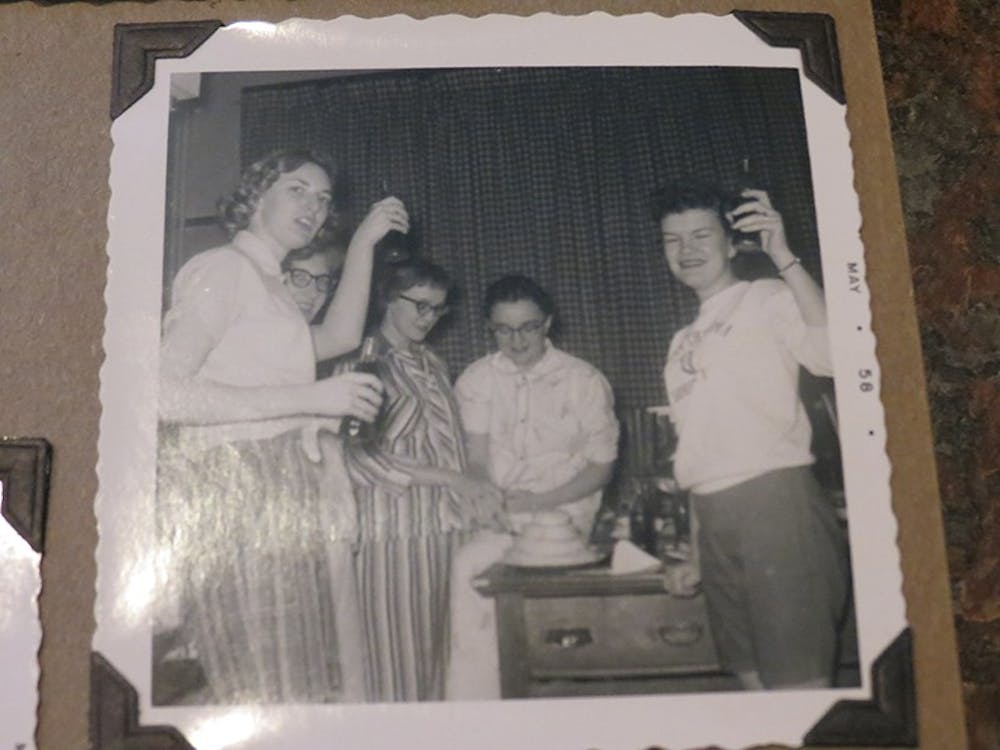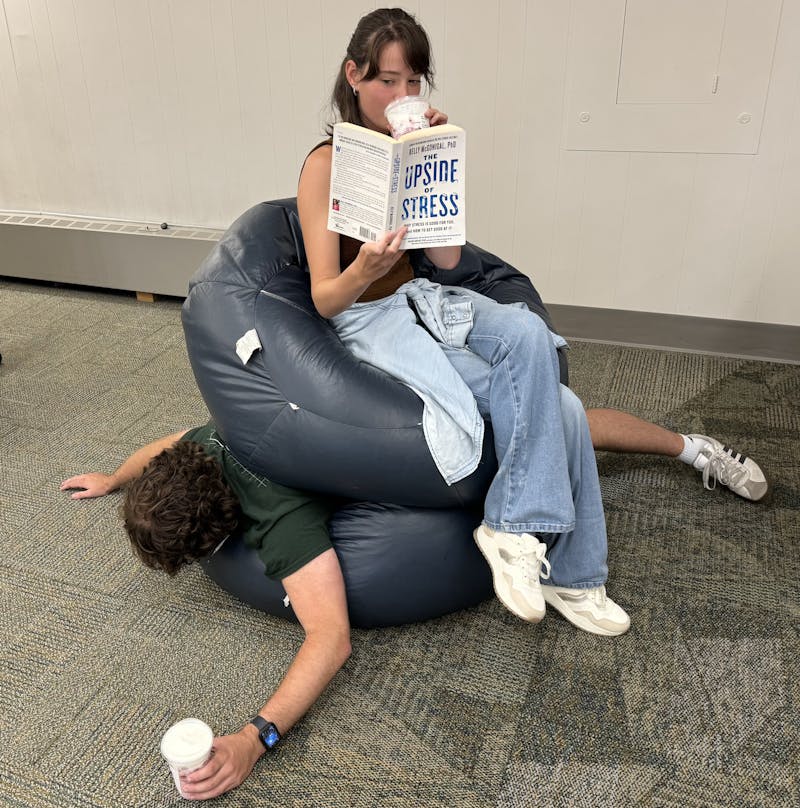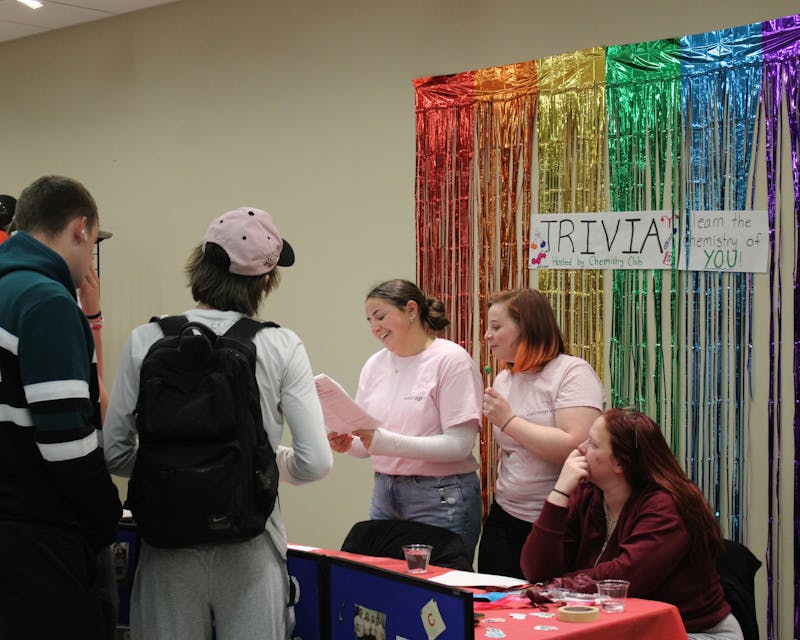Shippensburg University stretched below the graying skies of that winter afternoon like a museum of stories hidden in the ever-changing campus. On the fourth floor of Old Main, I stood in a long hallway with branching rooms, each a narrow strip with a single window.
Stepping onto the wooden floors, dull with dust, I was taken back to another time in which men helped women to their seats and an outing was a visit to the Varsity Shop for a sticky bun. Countless young men slept, studied and lived in these old dormitories. Signs of their presence are etched into the walls and doorframes with names showing through the layers of paint, refusing to be completely forgotten.
It was two boys per room, Sam Schucht said, when he attended SU from 1955 to 1959. The bunk beds were pressed against one wall, which left enough room for two desks, but not much else, Schucht said. The closet, a slim space cut into the wall, was shared.
“Keep in mind, the students back then didn’t have anything,” Schucht said. A record player would have been one of the few commodities jammed into a dorm room.
Schucht was the only one of his five siblings to graduate from college, and he worked every weekend and every break to be able to continue his education at SU. He started as a scared freshman and left as a knowledgeable and confident man, Schucht said. He owes all of his success to his education from SU.
One of his most memorable experiences from SU was meeting his wife in the dining hall, Schucht said.
Since Kriner Hall was not built until 1957, the dining hall Schucht knew was on the main floor of Old Main. Formal attire was required for the evening meal, which equated to dress pants and shirts for the men and dresses or skirts for the women. Students sat four women and four men to a table and had to have a full party before being seated, Schucht said, his warm voice coming through the phone as he discussed this feeling of family.
The men helped the women to their seats, a bell and a prayer began meals, and the food was not buffet style, but served at the table like a family meal, Schucht said.
For students who lived off campus or wanted a sweet treat, they went downtown to the Varsity Shop or “V” Shop, as alumnus Ron Conard called it. It was a popular place for students to go for a warm sticky bun paired with vanilla ice-cream. It was there, in the Varsity Shop, which has since burned down, where Conard first set eyes on his wife he said.
“Told me he would take me for a ride and show me the stars,” Kate Conard said laughing. That day she turned down her husband of almost 56 years and did not give him a second chance until she was forced to ask him for a car ride to a picnic.
In a corner of CJ’s American Pub and Grill with Ron and Kate, we looked through some of their college photographs, their faces peeking out from the past with taut, shining faces. In one picture neither seemed to realize the camera was snapping a picture. Huddled close with their knees brushing against each other, Ron looked sideways at Kate, and Kate looked back with bright eyes and an adoring smile.
It was a different time when Ron and Kate dated and attended SU in the late ’50s. Ron served three years in the Army before graduating in ’59, and Kate graduated one year later. Compared to the 6,942 of undergrad students currently enrolled at SU, there were about 750 to 800 students when Ron and Kate went to Shippensburg State Teachers College, as it was called until 1960, Ron said. Everything past Memorial Auditorium, which was the newest building on campus, was all cornfields, Ron said.
Not only the buildings, but also the lifestyle of students has changed. The rules were stricter and the punishments more severe in the 50s.
“People were thrown out of school for the most outrageous things in those years,” Kate said.
Schucht remembered a 22 or 23 year old veteran who was caught and punished for drinking a few beers downtown and returning to campus intoxicated, Schucht said, his voice booming over the phone.
Kate said if she there was a whiff of alcohol on her breath she probably would have been thrown out of the university. That is why Kate always ate peanut butter crackers before returning to her dorm after drinking a beer downtown, she said grinning widely.
For women the restrictions were even greater. Kate lived in the women’s dormitories in Horton Hall for two years where she faced the strict curfews enforced by the Dean of Women, Ms. Long, Kate said.
“She scared the bajeebers out of me,” Kate said of Ms. Long.
Ron recollected the time he dropped off Kate in front of Horton Hall, and Ms. Long was waiting for them on the steps with arms crossed and head jutting in the air, Ron said, mimicking Ms. Long’s posture as he sat in CJ’s.
“There will be no more of that,” is what Ron said Ms. Long told them. “You will shake hands.”
Not only was kissing forbidden in front of the dorms, but also smoking—but just for women, Kate said. Everybody smoked back then, Kate said, but women were restricted to where they could smoke, which was few public places.
Curfew was stringent in the dorms for women, too. After 8:00 p.m. the back doors to Horton Hall were locked and students were required to sign in and out by the front door, Kate said. She was caught once outside of the dorm after 8:00 and was “campused,” which meant that she could only leave her dorm for class and meals, Kate said.
In comparison, men did not have curfews, Schucht said. Instead, they had a maid service that came in every morning and made their beds. Periodically the sheets were changed for them too, Schucht said.
Women were not given this same service. They were allowed to wash just one of their two sheets each week and were supposed to rotate the top and bottom sheets, which would have both been straight without the elastic edge, Kate said. Of course, they usually found a way around this, Kate added.
Flipping through another page in Ron and Kate’s photo album were several pictures of Kate and her friends in the dorms. Six of them crammed themselves onto a twin bed in one picture and in another they raised coke bottles in the air as a salute to the camera. Decorations and home-made posters lined the walls, smiles plastered faces, and the scenes looked so familiar it felt like they could have taken place in either the 1950s or 2015.
Ron and Kate both agreed that what they remember most from their college experiences are the friends they made and have kept in contact with over the years.
“I can’t think of any long-term friends who didn’t go to school with us,” Kate said looking over at Ron who seemed to be thinking back to those times as he sat quietly.




The Slate welcomes thoughtful discussion on all of our stories, but please keep comments civil and on-topic. Read our full guidelines here.